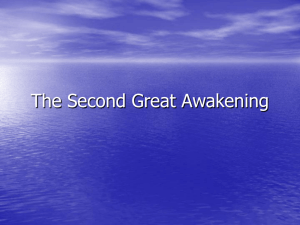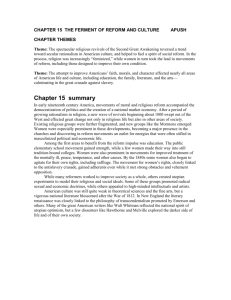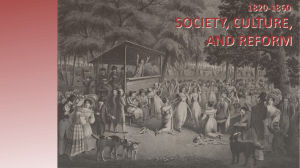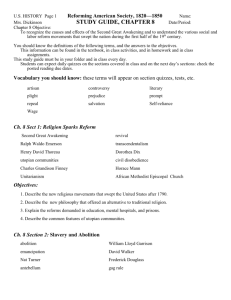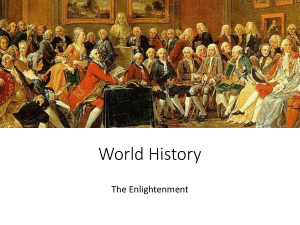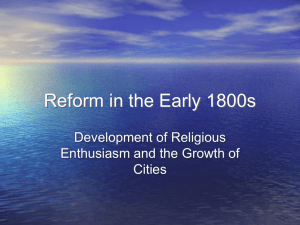Chap 10.1 and 10.2 Reading Guide
advertisement
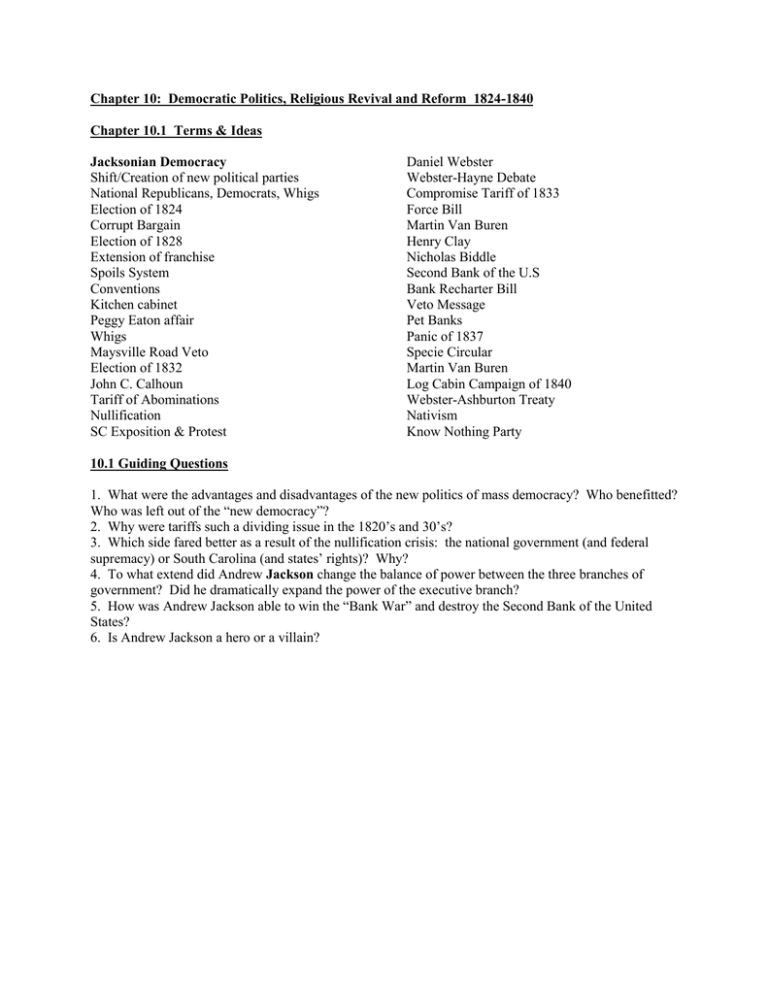
Chapter 10: Democratic Politics, Religious Revival and Reform 1824-1840 Chapter 10.1 Terms & Ideas Jacksonian Democracy Shift/Creation of new political parties National Republicans, Democrats, Whigs Election of 1824 Corrupt Bargain Election of 1828 Extension of franchise Spoils System Conventions Kitchen cabinet Peggy Eaton affair Whigs Maysville Road Veto Election of 1832 John C. Calhoun Tariff of Abominations Nullification SC Exposition & Protest Daniel Webster Webster-Hayne Debate Compromise Tariff of 1833 Force Bill Martin Van Buren Henry Clay Nicholas Biddle Second Bank of the U.S Bank Recharter Bill Veto Message Pet Banks Panic of 1837 Specie Circular Martin Van Buren Log Cabin Campaign of 1840 Webster-Ashburton Treaty Nativism Know Nothing Party 10.1 Guiding Questions 1. What were the advantages and disadvantages of the new politics of mass democracy? Who benefitted? Who was left out of the “new democracy”? 2. Why were tariffs such a dividing issue in the 1820’s and 30’s? 3. Which side fared better as a result of the nullification crisis: the national government (and federal supremacy) or South Carolina (and states’ rights)? Why? 4. To what extend did Andrew Jackson change the balance of power between the three branches of government? Did he dramatically expand the power of the executive branch? 5. How was Andrew Jackson able to win the “Bank War” and destroy the Second Bank of the United States? 6. Is Andrew Jackson a hero or a villain? Chapter 10.2 Terms & Ideas – *see Reformers Speed Dating assignment for 10.2 The Second Great Awakening Mormons Utopian Communities African Methodist Episcopal Church Reform Movements Republican Mothers “Cult of Domesticity” Education Reform: The McGuffey Reader Temperance Movement Seneca Falls Convention/Declaration of Sentiments 1. 2. 3. 4. Susan B. Anthony & Elizabeth Cady Stanton Prison Reform and Asylum Movements American Colonization Society Gag Rule John Quincy Adams William Lloyd Garrison & the Liberator American Anti-Slavery Society Nat Turner’s Rebellion Frederick Douglass & The North Star How did Evangelical religion influence American culture? Why did it inspire so many reform movements? What other factors inspired the reform movements of the early 19th century? Why then? Why so many utopian movements? What did they contribute to American culture? How were these movement democratic? Reformers Speed Dating (2nd block – do not use the italicized names) Charles G. Finney Joseph Smith Elizabeth Cady Stanton Susan B. Anthony Angelina and Sarah Grimke Nat Turner Sojourner Truth Dorothea Dix William Lloyd Garrison Sarah/Angelina Grimke Frederick Douglass William Lloyd Garrison Sojourner Truth John Humphrey Noyes Horace Mann Dr. Sylvester Graham John Audubon Mother Ann Lee Lucretia Mott Harriet Tubman George Ripley Father Theobald Mathew Ralph Waldo Emerson
